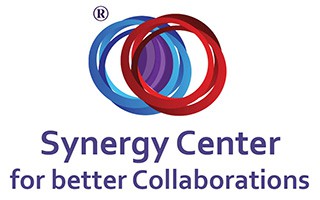From time to time, because of characteristics of postmodernity, such as diversity, frequent and fast-paced changes, ego or competition, organizations can fall “sick”. The occurrences of these characteristics can be seen in situations in which your organization is most vulnerable to “sickness”.
For example, change of leadership, assimilation of new procedures, cultures or technologies, improvement of customer service, and mergers and acquisitions. Your ability as a topmost manager or proprietor, and as a leader of a steering committee, to diagnose organizational sickness is a central managerial skill.
A tool such as a questionnaire that maps out interactions on an “as is” basis is powerful. The questionnaire, which is available at the Synergy Center, can enable you to strengthen the quality interactive forms, and reduce destructive forms. The results of your analysis of questionnaire responses can enable you to draw up recommendations for strengthening quality forms.
Improvement Team
As you steer your team toward implementing the recommendations, it’s equally important to constitute an improvement team. This team would assist you to reduce the manifestations of destructive interactions, execute real-time adjustments and adaptations, improve your employee’s skills to acknowledge diversity, and increase the efficiency of communication between organizational elements.
In addition, your steering committee working in collaboration with the improvement team can tailor work processes to organizational needs. They would never run short of ideas on how to implement real-time improvements. Then, you can document the results to contribute to your organizational memory after the work of the team members is over.
A Case of Constituting an Improvement Team in an Advertising and Public Relations Organization
As a seasoned organizational consultant, Dr. Rami Ben-Yshai has assisted several organizations to constitute an improvement team. In this case, he was working with an advertising and public relations organization whose structure was somewhat compartmentalized. The organization’s employees handled client’s portfolios, and each served a specific client. This kind of structure and work arrangement required high levels of synergy between employees and between employees and managers.
The human resources department was lacking a recruitment and training unit. The consultant, together with the organization, created an improvement team for human resources and social services. The team worked under the direct oversight of the chief executive officer. The team’s purpose was to improve employee’s recruitment, selection, social service, remuneration, and so forth. The team’s budget allocation was annual.
The team’s effort led to an improvement in the quality of human capital management and satisfaction. In addition, employee recruitment process improved. The improvement of synergistic interactions between managers and employees saved the organization the need to undertake costly human resource operations. Similar results were realized in another organization in which procedures improved and bottlenecks reduced.
Factors to Consider When Constituting an Improvement Team
- It isn’t a must – employees who are willing to volunteer should join an improvement team.
- It’s voluntary in the sense that employees allocate time for the activities of the team in their work schedules — not private time.
- Activities can’t go on without authorization and budget allocation.
- The members must familiarize themselves with relevant issues in the assimilation of synergy process.
- The constitution of the team must draw members from different hierarchical levels of the organization.
Differences in Improvement Teams Between Small and Big Organizations
In big organizations, unlike small organizations, someone’s in charge of the execution of the change processes. For example, human resource manager, a training manager, an organizational development manager, a procedures and methods manager, etc. These managers usually oversee a department, which controls all the operations for executing organizational change. Hence, it’s easier to kick off the process of synergy assimilation.
However, the organization’s procedure, culture or hierarchical structure contributes to rigid boundaries, which make it difficult to assimilate the language of synergy. And because small organizations have fewer employees than larger organizations, it’s important to constitute a team, which tackles problems that relate improvement and execution of changes to employee’s work schedules.
And because it’s a volunteer activity, the team’s makeup must be employees who’ve interest in and attraction to that activity. For some employees, this could be an opportunity to demonstrate their professionalism in the hope for promotion and to satisfy their personal goals.
To Conclude…
As a senior managerial authority and a leader of a steering committee, it’s important to supplement your actions with an improvement team. This team must draw members from across hierarchical levels, and its activity is voluntary. Just be sure to include people in your team who’ve a genuine interest and attraction to the team’s activity. It’s you who authorizes its activities and allocates it the budget.




